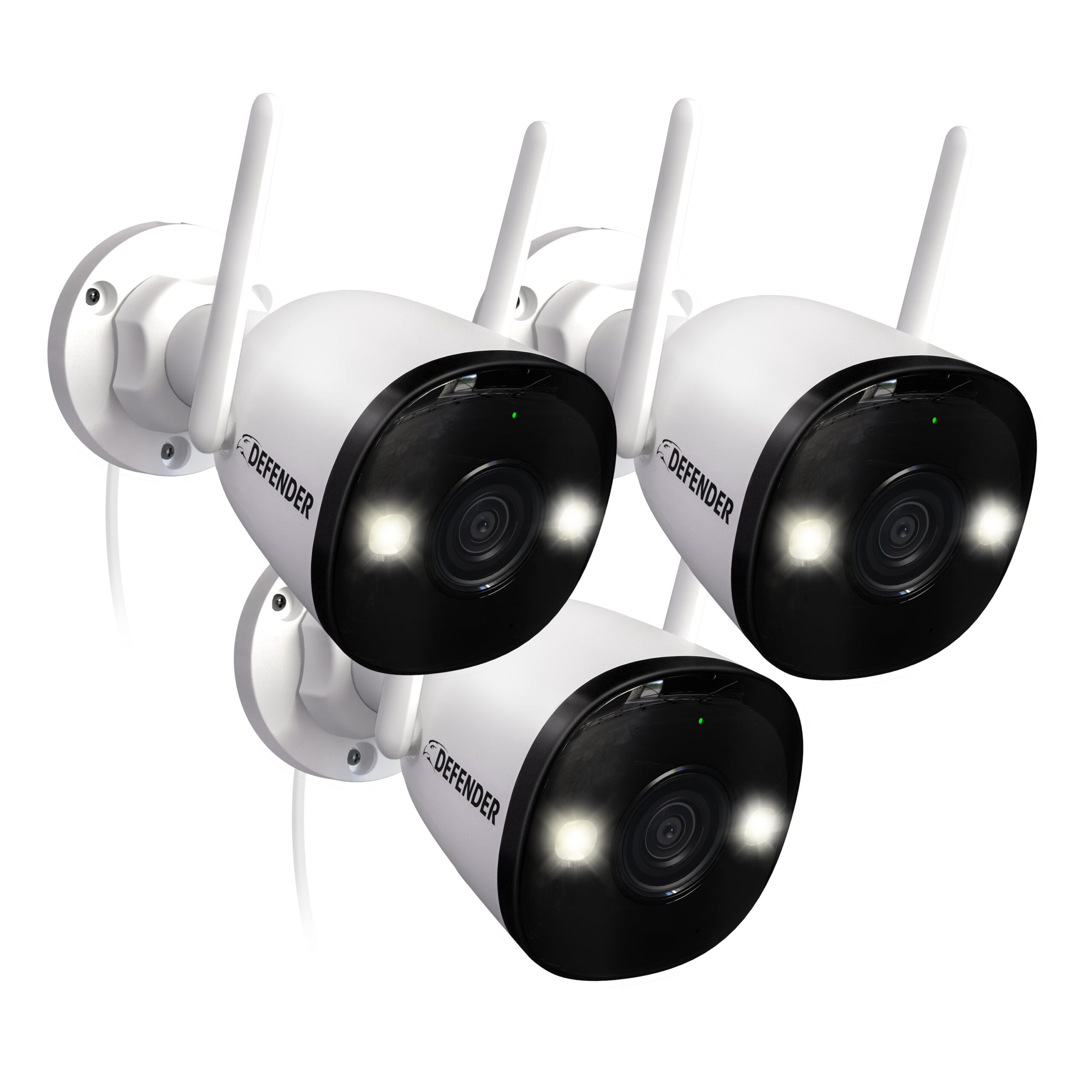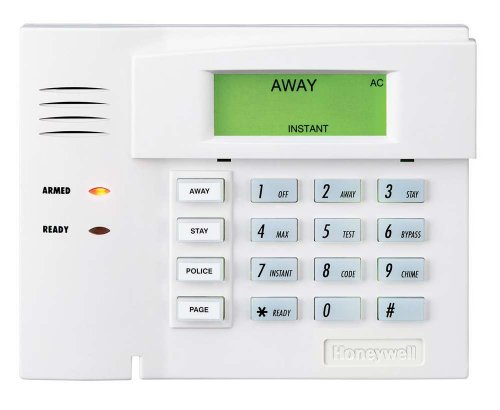Are you looking for a simple way to keep your home or business safe without the hassle of wires? Wireless security cameras could be the perfect solution for you.
They offer flexibility, easy installation, and real-time monitoring right from your phone. Imagine having peace of mind, knowing you can check on your property anytime, anywhere. You’ll discover how wireless security cameras work, why they might be the best choice for your needs, and what to look for when picking the right one.
Keep reading to find out how you can boost your security effortlessly.
Benefits Of Wireless Security Cameras
Wireless security cameras offer many advantages over wired systems. They provide easy setup and flexible use in different places.
These cameras help keep your property safe by allowing you to watch remotely. They fit well in many situations.
Easy Installation
Wireless security cameras do not need complicated wiring. This makes the installation faster and simpler.
You can place the cameras without drilling holes or running long cables through walls.
- No need for wires or cables
- Quick setup saves time
- Works well for renters and homeowners
Flexible Placement
Wireless cameras can be placed anywhere with a Wi-Fi signal. This gives you many options to cover blind spots.
You can move cameras easily if you want to change the view or improve security.
- Place cameras indoors or outdoors
- Adjust positions anytime
- Cover wide or narrow areas
Remote Monitoring
Wireless cameras connect to your phone or computer. You can watch live video from anywhere.
This feature helps you check your property anytime you want. It adds peace of mind when you are away.
- View camera feeds on mobile devices
- Receive alerts for unusual activity
- Control cameras remotely

Credit: www.amazon.ca
Key Features To Look For
Wireless security cameras help keep your home or business safe. Choosing the right camera means checking important features. These features affect the camera’s performance and usability.
Knowing what to look for can save you time and money. It also ensures you get a camera that fits your needs.
Video Quality And Resolution
Clear video helps you see details like faces and license plates. Resolution shows how sharp the image is. Higher resolution means better image quality.
Look for cameras with at least 1080p resolution. Some cameras offer 2K or 4K for even clearer video. Good video quality is important for evidence and monitoring.
Night Vision Capabilities
Night vision lets your camera record in low light or dark places. Infrared LEDs help the camera see in the dark. Check how far the night vision range goes.
Some cameras have color night vision. This shows clearer images at night. Night vision keeps your property safe 24/7.
Motion Detection
Motion detection alerts you when something moves in view. It saves storage by recording only when needed. Sensitivity settings help reduce false alarms.
- Adjust sensitivity to avoid false alerts
- Set specific zones to monitor
- Receive instant notifications on your phone
Two-way Audio
Two-way audio lets you talk and listen through the camera. This feature helps you communicate with visitors or warn intruders. It adds extra security and convenience.
Look for cameras with clear speakers and microphones. Good audio quality improves communication.
Cloud Storage Options
Cloud storage saves your videos online. This keeps footage safe even if the camera is stolen. Check for subscription plans and storage limits.
Some cameras offer free storage for a short time. Others have paid plans for more space. Choose a plan that fits your budget and needs.
Popular Wireless Camera Types
Wireless security cameras are popular for home and business use. They offer easy installation and flexible placement.
Different types of wireless cameras fit different needs. This guide explains the main types you can choose from.
Indoor Cameras
Indoor cameras are designed for use inside buildings. They help monitor rooms, hallways, and entrances.
These cameras are usually small and easy to hide. Many have night vision to see in the dark.
- Compact size for discreet placement
- Night vision for low light areas
- Two-way audio for communication
- Motion detection alerts
Outdoor Cameras
Outdoor cameras are built to handle weather and harsh conditions. They protect your property outside your home or business.
These cameras often have strong housing and wide viewing angles. Many include infrared night vision for clear images at night.
- Weatherproof design
- Wide-angle lenses
- Infrared night vision
- Motion detection with alerts
Doorbell Cameras
Doorbell cameras combine video with a doorbell function. They let you see and talk to visitors at your door.
These cameras improve home security and convenience. They often include motion alerts and video recording.
- Video and two-way audio
- Motion alerts for visitors
- Easy doorbell integration
- Video recording and playback
Pan-tilt-zoom Cameras
Pan-tilt-zoom (PTZ) cameras can move and zoom remotely. They cover large areas with one camera.
Users can control the camera direction and zoom to see details. PTZ cameras are good for big spaces or wide views.
- Remote control of camera angle
- Zoom to see fine details
- Good for wide or large areas
- Often include preset patrol paths

Credit: www.amazon.ca
Enhancing Smart Home Integration
Wireless security cameras add safety and ease to your smart home. They connect easily to other devices without wires.
These cameras work with many smart home tools. They help keep your home secure and smart at the same time.
Compatibility With Voice Assistants
Many wireless cameras work with voice assistants like Alexa and Google Assistant. You can use voice commands to see camera views or change settings.
This makes it easy to check your home without using your hands. You just ask your voice assistant to show the camera feed.
- Ask to show live video on smart displays
- Turn cameras on or off using voice
- Get status updates through voice commands
Connecting With Smart Hubs
Wireless security cameras connect with smart hubs like Samsung SmartThings or Apple HomeKit. The hub acts as a control center for all devices.
Connecting cameras to a hub lets you manage them easily. You can control cameras and other smart devices from one app.
- Central control for multiple devices
- Easy device setup and management
- Improved communication between devices
Automating Security Alerts
Wireless cameras can send alerts automatically when they detect motion or sound. These alerts can be sent to your phone or smart device.
You can set rules for when alerts happen. This helps you respond quickly to any security issues without checking the camera all the time.
- Get instant notifications on your phone
- Set alerts for specific times or events
- Use smart home devices to trigger alarms or lights
Securing Your Wireless Camera System
Wireless security cameras help keep your home and business safe. You must protect your system from hackers.
Good security stops people from spying or stealing your video footage. Use simple steps to secure your cameras.
Strong Password Practices
Use strong passwords for your wireless camera accounts. Avoid easy words or common numbers.
Change the default password that comes with the camera. Create a unique password with letters, numbers, and symbols.
- Use at least 8 characters
- Mix uppercase and lowercase letters
- Include numbers and special characters
- Do not reuse passwords from other accounts
- Update passwords regularly
Firmware Updates
Firmware is the camera’s internal software. It controls how the camera works and stays secure.
Manufacturers release updates to fix security problems. Install these updates as soon as you get them.
- Check for updates on the camera app or website
- Enable automatic updates if available
- Keep your camera’s firmware current to protect from hacks
Network Security Tips
Wireless cameras connect to your Wi-Fi network. Secure your network to stop intruders from accessing your cameras.
Use strong Wi-Fi passwords and secure your router settings. Limit who can join your network.
- Use WPA3 or WPA2 encryption for Wi-Fi
- Change your router’s default password
- Turn off WPS on your router
- Use a separate network for your cameras
- Disable remote access if not needed

Credit: www.defendercameras.ca
Common Installation Mistakes To Avoid
Installing wireless security cameras seems easy but many make mistakes. These mistakes reduce camera effectiveness.
Knowing what to avoid helps keep your home safe with clear video and reliable operation.
Poor Camera Placement
Placing cameras in the wrong spots limits their view and coverage. Avoid blind spots and glare from lights.
Place cameras where they can see entrances, windows, and driveways clearly. Avoid pointing them at bright lights.
- Mount cameras high for a wide view
- Avoid facing cameras directly into sunlight
- Check for obstacles like trees or walls
- Cover all main access points
Ignoring Power Source Needs
Wireless cameras still need power, either batteries or plugs. Ignoring this can cause cameras to stop working.
Choose locations near power outlets or where you can easily change batteries. Test power before final setup.
- Check battery life regularly if using batteries
- Use weatherproof power adapters outdoors
- Avoid long extension cords that can trip or disconnect
Overlooking Weather Protection
Outdoor cameras face rain, wind, and dust. Not protecting them can damage the device and reduce video quality.
Use cameras rated for outdoor use and install covers or shields if needed. Keep lenses clean for clear images.
- Choose cameras with IP65 or higher weather rating
- Install under eaves or awnings for extra protection
- Clean lenses regularly to avoid dirt buildup
Cost Considerations And Budgeting
Wireless security cameras are popular for home and business safety. Knowing the costs helps you plan your budget well.
Costs include buying the equipment, paying fees, and keeping the system working. Each part affects your total spending.
Upfront Equipment Costs
Buying wireless security cameras needs an initial payment. Prices vary by brand, features, and number of cameras.
Some cameras come with extra items like mounts or batteries. These add to the upfront cost but are useful for installation.
- Basic camera models cost less
- High-resolution cameras cost more
- More cameras increase total price
- Extra accessories may add to cost
Subscription Fees
Many wireless cameras need a monthly or yearly subscription. This fee covers cloud storage and extra features.
Subscription fees differ based on storage size and video quality. Decide if you want basic or advanced services.
- Cloud storage for recorded videos
- Access to app features and alerts
- Higher plans offer longer video history
- Cancel anytime if you do not want service
Maintenance Expenses
Wireless cameras need regular care to work well. Maintenance costs include battery replacement and software updates.
Sometimes, cameras may need repairs or new parts. Budget some money yearly for keeping your system in good shape.
- Replacing batteries every few months
- Updating software for security and features
- Repairing damaged cameras or parts
- Cleaning lenses for clear images
Troubleshooting Common Issues
Wireless security cameras can face some common problems. These issues often affect how well the camera works.
Knowing how to fix these problems helps keep your system running smoothly and protects your home better.
Connectivity Problems
Wireless cameras need a strong Wi-Fi signal to work well. If the connection is weak, the camera may stop working or lose signal.
Try moving the router closer to the camera or use a Wi-Fi extender. Check if the camera is within the Wi-Fi range and free from obstacles.
- Place the camera closer to the router
- Remove walls or objects blocking the signal
- Restart your router and camera
- Check if the Wi-Fi password changed
Video Lag Or Quality Drops
Video lag or poor quality can happen if the internet speed is low. The camera may also reduce video quality to save bandwidth.
Try reducing the number of devices on your network. Lower the camera video resolution in its settings for smoother streaming.
- Limit devices using the Wi-Fi
- Lower video resolution in camera settings
- Use a wired connection if possible
- Update the camera firmware
Power Failures
Power problems can cause cameras to turn off or restart. Check if the camera’s power source is stable and connected correctly.
For battery-powered cameras, replace or recharge the batteries. For wired cameras, check cables and power outlets for damage or loose connections.
- Replace or charge batteries regularly
- Check power cables for damage
- Ensure the power outlet works
- Use a surge protector to avoid outages
Frequently Asked Questions
What Are The Benefits Of Wireless Security Cameras?
Wireless security cameras offer easy installation, flexible placement, and remote monitoring. They reduce wiring costs and support smart home integration. These cameras enhance home security with real-time alerts and cloud storage options, making them convenient and reliable for modern surveillance needs.
How Do Wireless Security Cameras Connect To Wi-fi?
Wireless security cameras connect to Wi-Fi using built-in wireless adapters. They communicate with your home router to transmit video data. A stable Wi-Fi signal ensures smooth live streaming and recording. Most cameras use secure encryption to protect your footage from unauthorized access.
Can Wireless Security Cameras Work Without Internet?
Yes, some wireless security cameras can record locally without internet. They store footage on SD cards or network video recorders. However, remote viewing and notifications require internet access. Without internet, you lose the ability to monitor live feeds remotely.
Are Wireless Security Cameras Safe From Hacking?
Wireless security cameras use encryption and password protection to prevent hacking. Regular firmware updates improve security by fixing vulnerabilities. Using strong, unique passwords and secure Wi-Fi networks further protects your camera system from unauthorized access.
Conclusion
Wireless security cameras offer convenience and peace of mind. They are easy to install and maintain. These cameras let you monitor your home from anywhere. You only need a smartphone or a computer. They help you keep an eye on your property 24/7.
Choose the right camera for your needs and budget. Consider features like night vision and motion detection. Remember, a secure home is a happy home. Investing in wireless security cameras is a smart choice. Stay informed, stay safe, and protect what matters most to you.
22 min read






